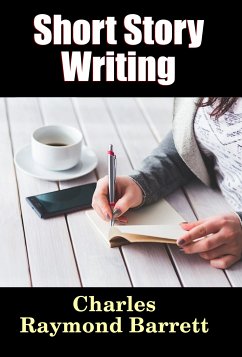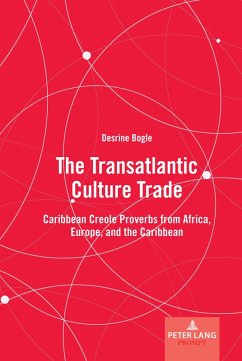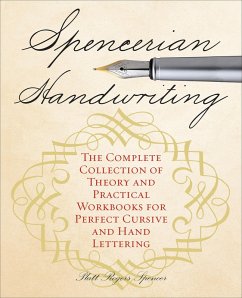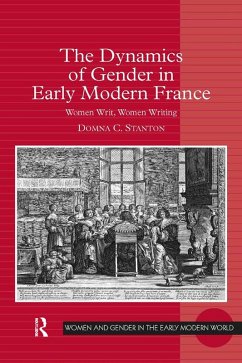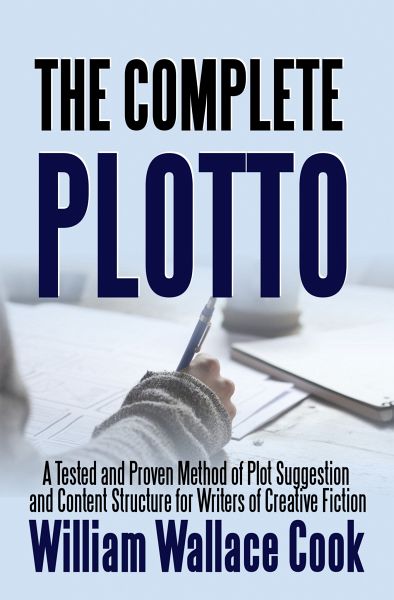
The Complete Plotto - trade (eBook, ePUB)

PAYBACK Punkte
0 °P sammeln!
How to Write A Novel Every WeekThe trick is in coming up with enough plots.A wildly prolific, early 20th century pulp writer, William Wallace Cook was a writing machine. At times he did indeed regularly turn out a full novel every week, for weeks at a time.While he set the bar for pulp fiction, he was also passionate about the process of writing itself. Keeping notes on index cards, he was able to distill the process of plotting down to a simple, but thorough manual, Plotto.Why should you have a copy around your writing office? As Cook tells it: "Plotto is the greatest single aid i...
How to Write A Novel Every Week
The trick is in coming up with enough plots.
A wildly prolific, early 20th century pulp writer, William Wallace Cook was a writing machine. At times he did indeed regularly turn out a full novel every week, for weeks at a time.
While he set the bar for pulp fiction, he was also passionate about the process of writing itself. Keeping notes on index cards, he was able to distill the process of plotting down to a simple, but thorough manual, Plotto.
Why should you have a copy around your writing office? As Cook tells it:
"Plotto is the greatest single aid in plotting ever offered writers. Make up your mind now to give Plotto and this manual the time it deserves. The best-known writers in the world own and use Plotto."
Alfred Hitchcock was an early student, so was Earl Stanley Gardner. Robert Silverberg also gave a great review of the book.
This point many miss is that these plotting generators are best used as methods of inspiration, not as a subsitute for a writer's perspiration. While many author's rave about Plotto, it is perhaps better to use it as a learning tool. Certainly having a copy on hand when the muse has left you, the deadline looms and your private hell of Writer's Block seems camped in your office.
When Cook published Plotto in finished form in the late 1920's, he recieved feedback from readers who still could not work out how to use his massive book from the instructions in the front of it.
In 1934, he came out with a seven-part lesson series that simplified the learning curve.
"Plotto is a new method of plot SUGGESTION for writers of CREATIVE fiction. Let us, here at the beginning of our course, place the emphasis on the word SUGGESTION, as well as on that other word, CREATIVE. In later lessons of the course we shall go more deeply into this matter of the interpretation of suggestion.
"For the present, however, it is merely necessary to note that the interpretation of suggestion results in creative work only when the constructive imagination builds with material hewn from the quarry of individual experience. In other words, we achieve Originality; and Originality is the ideal of the Plotto method of plot construction through the interpretation of plot suggestion."
This edition includes the seven lessons in Plotto Instruction Manual in its Appendix so that you can quickly master plotting on your own.
Even as a complete distraction to your writing, Plotto can be perused to give you more ideas for later writing. Be sure to keep a notebook to hand to write down your own ideas. Or just get to your keyboard and start punching it out.
Also available in a letter-sized (coffee-table) book.
Get Your Copy Today.
The trick is in coming up with enough plots.
A wildly prolific, early 20th century pulp writer, William Wallace Cook was a writing machine. At times he did indeed regularly turn out a full novel every week, for weeks at a time.
While he set the bar for pulp fiction, he was also passionate about the process of writing itself. Keeping notes on index cards, he was able to distill the process of plotting down to a simple, but thorough manual, Plotto.
Why should you have a copy around your writing office? As Cook tells it:
"Plotto is the greatest single aid in plotting ever offered writers. Make up your mind now to give Plotto and this manual the time it deserves. The best-known writers in the world own and use Plotto."
Alfred Hitchcock was an early student, so was Earl Stanley Gardner. Robert Silverberg also gave a great review of the book.
This point many miss is that these plotting generators are best used as methods of inspiration, not as a subsitute for a writer's perspiration. While many author's rave about Plotto, it is perhaps better to use it as a learning tool. Certainly having a copy on hand when the muse has left you, the deadline looms and your private hell of Writer's Block seems camped in your office.
When Cook published Plotto in finished form in the late 1920's, he recieved feedback from readers who still could not work out how to use his massive book from the instructions in the front of it.
In 1934, he came out with a seven-part lesson series that simplified the learning curve.
"Plotto is a new method of plot SUGGESTION for writers of CREATIVE fiction. Let us, here at the beginning of our course, place the emphasis on the word SUGGESTION, as well as on that other word, CREATIVE. In later lessons of the course we shall go more deeply into this matter of the interpretation of suggestion.
"For the present, however, it is merely necessary to note that the interpretation of suggestion results in creative work only when the constructive imagination builds with material hewn from the quarry of individual experience. In other words, we achieve Originality; and Originality is the ideal of the Plotto method of plot construction through the interpretation of plot suggestion."
This edition includes the seven lessons in Plotto Instruction Manual in its Appendix so that you can quickly master plotting on your own.
Even as a complete distraction to your writing, Plotto can be perused to give you more ideas for later writing. Be sure to keep a notebook to hand to write down your own ideas. Or just get to your keyboard and start punching it out.
Also available in a letter-sized (coffee-table) book.
Get Your Copy Today.
Dieser Download kann aus rechtlichen Gründen nur mit Rechnungsadresse in A, B, BG, CY, CZ, D, DK, EW, E, FIN, F, GR, H, IRL, I, LT, L, LR, M, NL, PL, P, R, S, SLO, SK ausgeliefert werden.






